Gotta be ready.
8/7/2023. I saw this bright prominence hanging like a cloud above the rim in survey photos and thought it might actually be a flare. I thought the bright active region below it might be about to host arcade loops. So I set up in a hurry and caught what I thought was going to be a long-duration M-class show. It was "just" a prominence / filament erupting from a big active region. I caught three full 1,000 frame clips through fast-moving clouds -- 35-second clips through 45-second gaps (with a tornado watch in the offing for added drama). It was a good, fast-changing show, though not the energetic event I expected.
Hint: click on 'em to make 'em big.
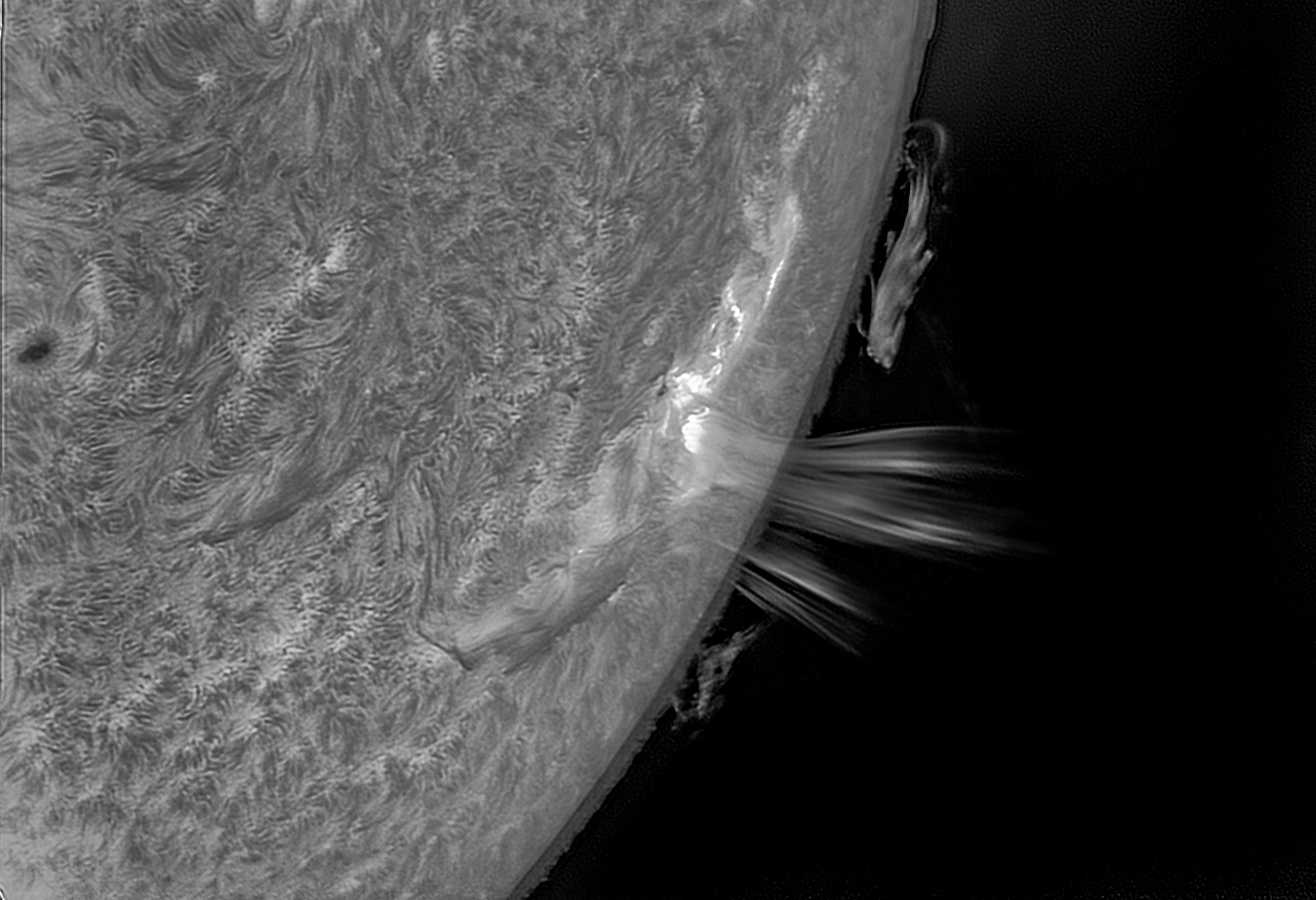

All images are stacks of the best 250 of 1,000 frames. Timestamps in the 3-up mosaic are uncorrected UTC times, whatever the computer appended. They serve mostly to indicate the speed of development. Some hours later, when the Sun was hidden by storm clouds and pine tops, this Active Region (#3386) fired an X-class flare.
While cleaning up the SSD, I tried processing some of the short clips interupted by clouds. Some surprisingly good photos came from as few as the best 50 frames of 200-frame clips. That sampling is typical of the next three images which, though clearly not as good as the results of longer clips above, are pretty respectable just the same, especially when viewed at web resolutions.

4:43
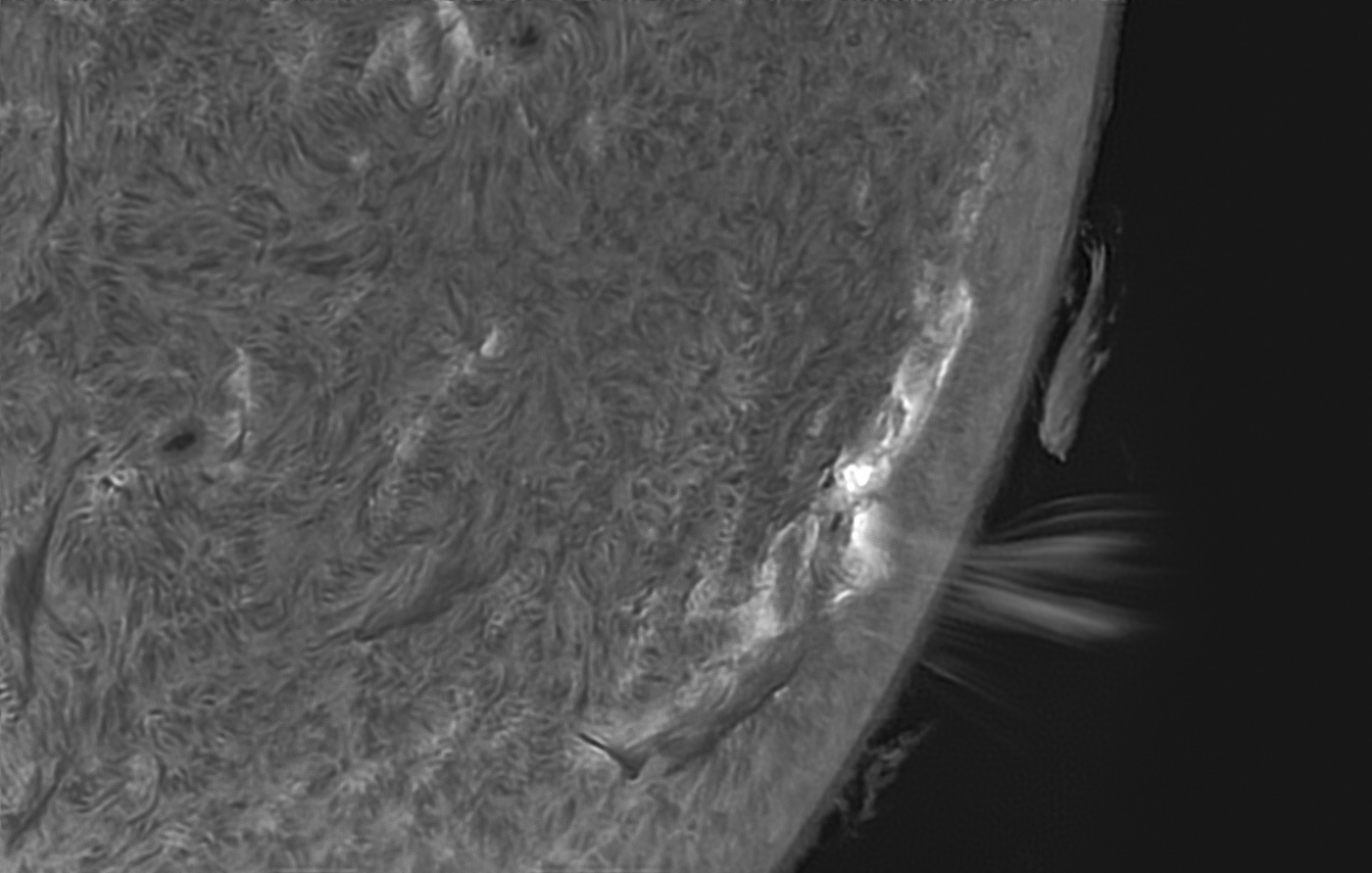
4:55
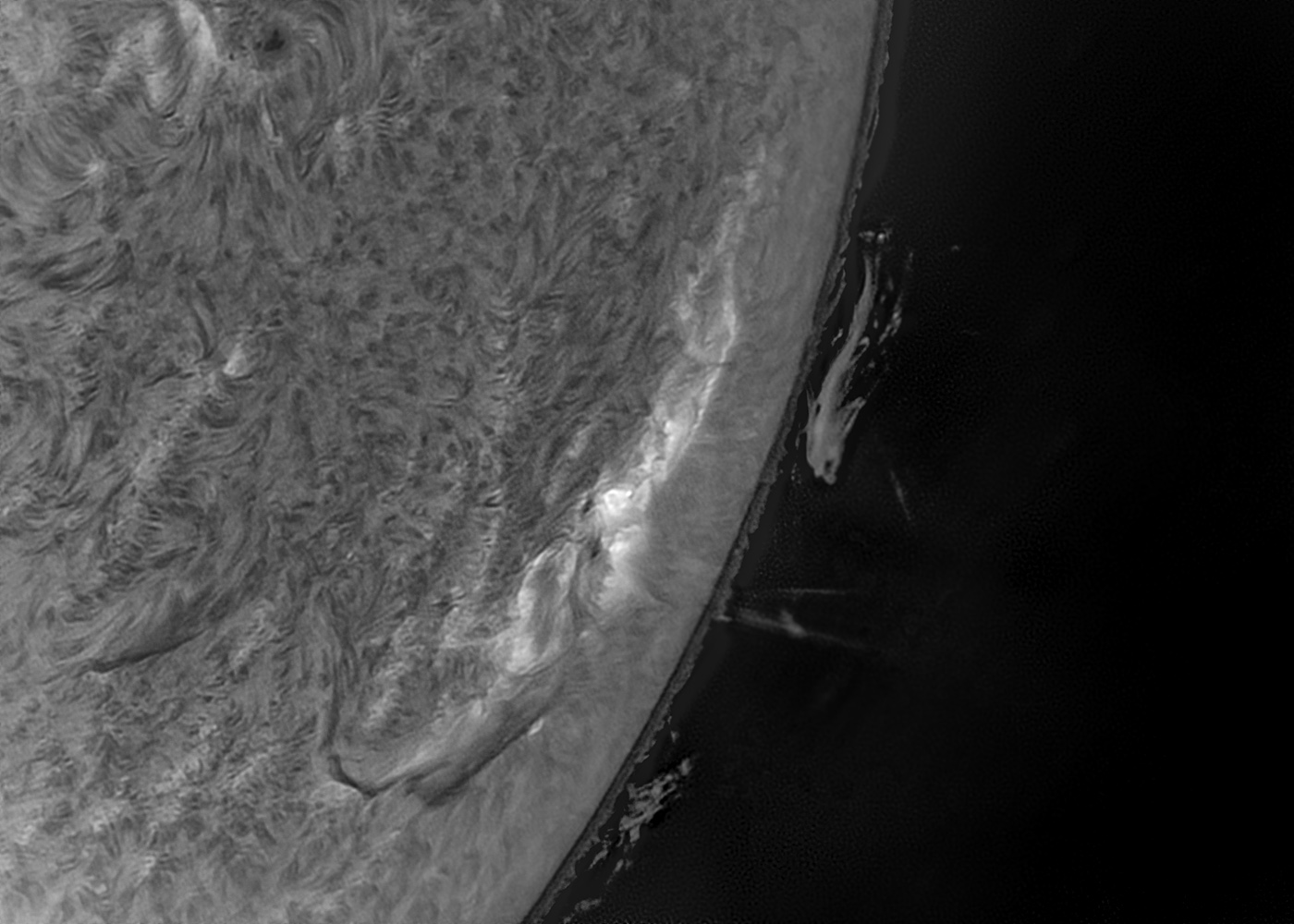
5:05
8/09/2023. And you gotta stay in practice. Some fresh prominences coming over the hill (best 250 of 1,000), gamma off -- they were invisible while capturing. I tried this with gamma set to show them well in realtime, but the results were nowhere near as good as this. Post processing is a little clumsy though. The lacework in that right-hand prominence could use a good bit of work (or maybe a good bit less). If you make it big, you'll see what I'm on about. Maybe you should just leave it small.
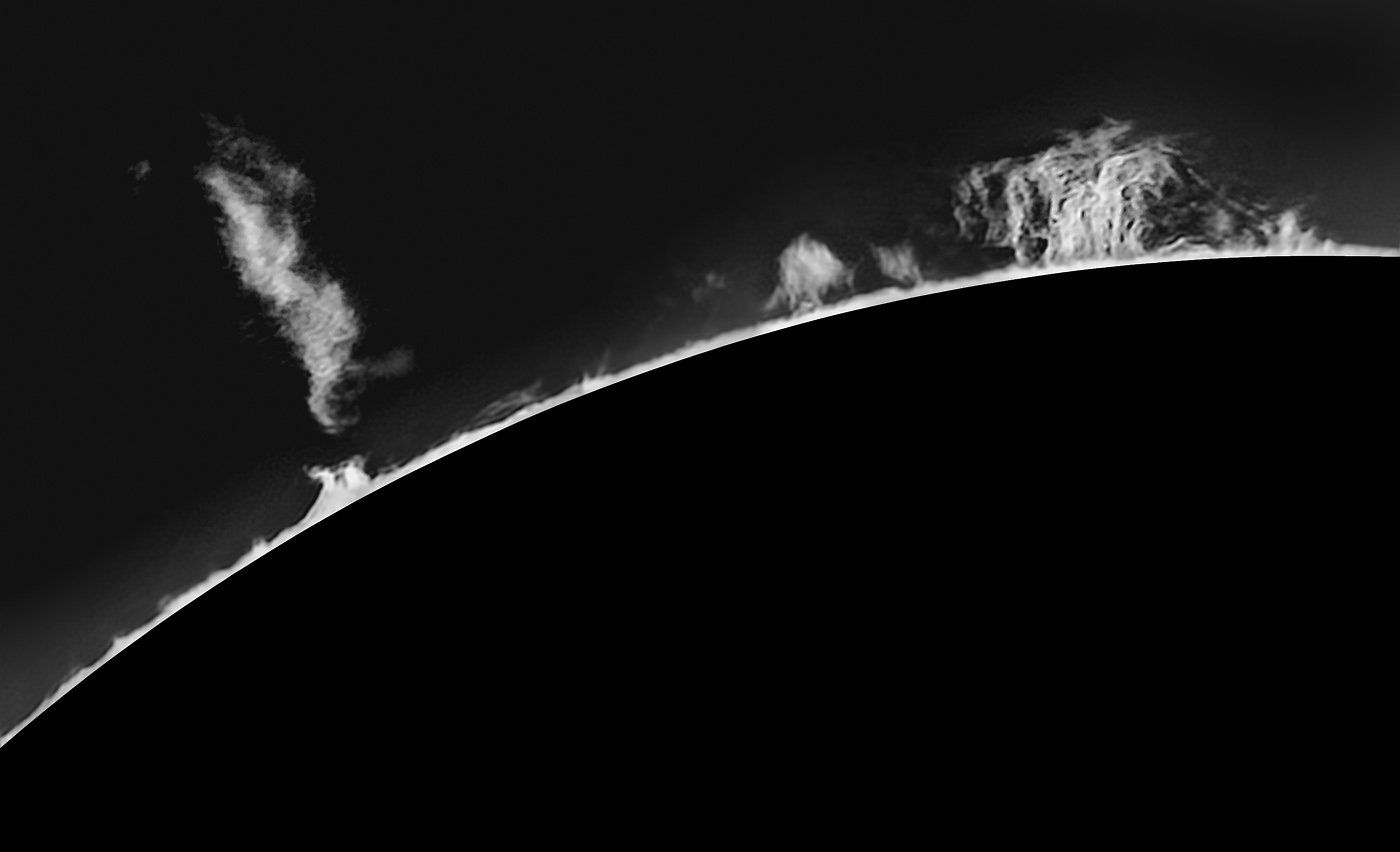
Seeing was anywhere from atrocious to really good today (maybe because I was out early and shooting across the roof). I tried a longer-than-usual clip to ensure that I'd get plenty of sharp frames. This is the best 300 of 3,000:
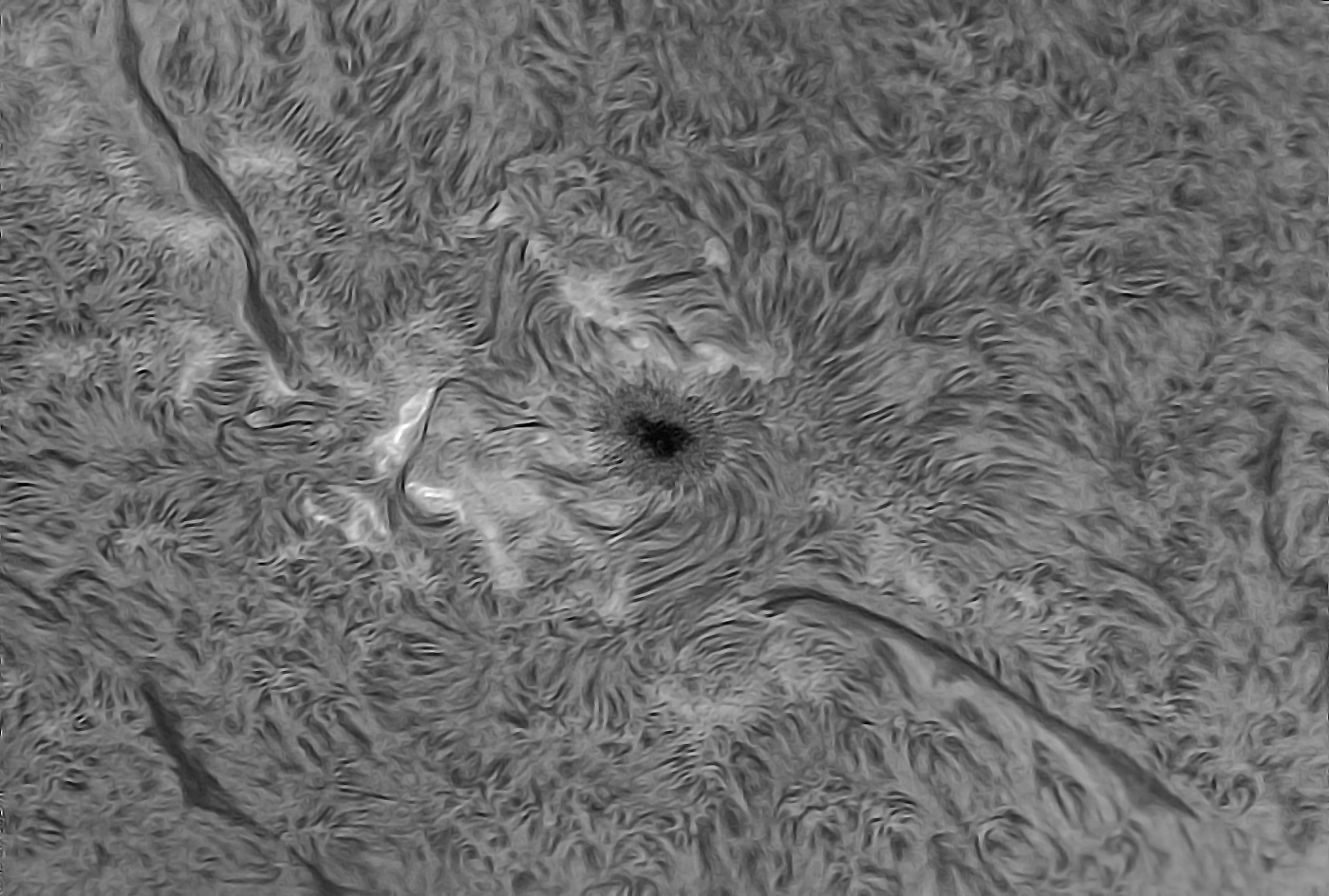
That's a straight-on view of the active region which rotated into view earlier this week, seen here four days ago:

My solar images beginning in June 2023 are made using a Daystar Quark Chromosphere filter on a TMB92SS refractor. A 2" Baader 7nm Ha filter and an A-P dielectric diagonal provide extra IR protection. The camera (~2021 et seq) is a ZWO ASI178MM chosen for its tiny pixels and fast capture rate. It is notorious for a nasty pattern noise which can be avoided with careful exposure or removed using FFT-based processing. I capture
data using FireCapture, stack using AS!3, deconvolve and perform initial histogram adjustments using IMPPG, and polish in Photoshop. The solar kit is mounted on a Skywatcher Star Adventurer "tracking platform."
:: top ::